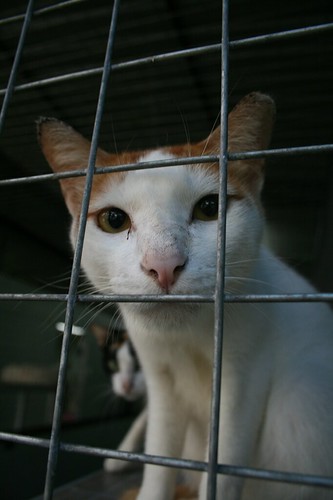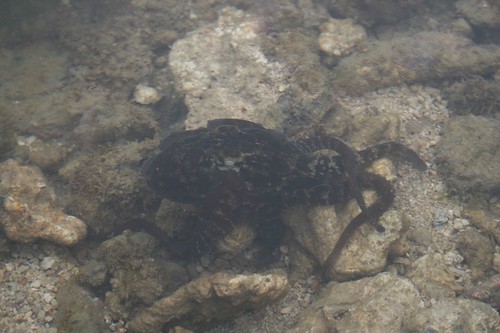
Last Saturday, I went on a trip with NUSSU SAVE to an "animal resort" at Seletar. Although that in itself is an blogworthy experience, I would rather put aside my rants in favour for my raves.
I have always been a cat person. Of course all animals are welcomed in the monkey's tiny bosom but then cats always have a special place in my heart. Knowing that, you can just imagine my excitement when I saw a cat shelter just beside the animal resort.
Understandably conditions are not fantastic and the fact is that I have never personally visited any other cat shelters prior. Thus I am unable to make an accurate comparison or assessment of conditions. But overall, I did not find the conditions of the cats too negative. They all looked healthy and well fed. All of them are neutered and look content. Each are confined to a room of their own with baskets, shelves and fence to climb around. Some even have fans to ventilate their rooms. The only thing that might strike a person is perhaps the overwhelming concentration of feline urine ordour. But I suppose that cannot be avoided.
I started chatting up one of the girls who work at this shelter. I think one of my first question to her was if she is a volunteer. Instead, I was pleasantly surprised by her answer that she is actually paid, as are the other staff at the cat shelter. I guess I am so used to people being volunteers at cat shelters but perhaps somebody can correct me if I am wrong.
Other than taking in strays, the cat shelter also serves as a boarding home for owners who can no longer keep the cats at their house. I suppose they pay regular maintenance fees which allow the owner of the shelter to afford employing full time caregivers to these pretty felines.
I was also informed that many of these kitties are actually abuse cases where some are one leg short or blinded or burnt. I suppose this is where the money from the other cats will cover the true rescue cases. If I am not wrong, it was divulged that the owner of this cat shelter used to be with the cat welfare society.

Upon further conversation, I found out that the caregiver I was talking to is actually a diploma holder who some how got the opportunity to work at this cat shelter. The pay seems decent, commanding more than a thousand dollars a month but is often met with disapproval from friends and family who question why she is engaged in such manual labour even though she has a diploma! Personally I told her that I think she has a fantastic job and I absolutely wouldn't mind having a job like that. She was surprised and said I'm the first person who ever told her that she has a good job. I think that made her day.
I think people who are engaged in occupations or vocations that goes beyond the ordinary 9-5 office jobs deserve our praise. Especially people who care for animals, places or even things that the common urbanites would hardly begin to fathom engaging in. To be able to break through social censure and commit to such a job with salary below her peer's deserve our encouragement and admiration. This includes people who work for NGOs, animal welfare groups and other jobs that people in meritocratic singapore would normally scoff at! For that alone, I have much admiration and praise for these dedicated beings. An example that comes promptly to mind would be Louis Ng, the executive director of ACRES who actually took a salary of $500 a month in the beginning, just as any other staff in ACRES, even though he has a Masters degree in Primate Conservation! Kudos!
I didn't get much chance to continue the conversation at that point as more people approached the shelter. What really tickled my curiousity is how she got the job in the first place? She mentioned that she never really liked cats before as she was scratched on the face when she was young. But today, she is a full time care giver at a cat shelter! I think the transition from fear and dislike to full time commitment is rather amazing. I would hardly think money or societal support were any part of the equation so I guess I can only conclude that the feline persuasion worked its charm again.
Meow!
Related Reads:
Working with the Cat Welfare Society [link]
Cat Welfare Society [link]
ACRES [link]
Metta Cattery [link]
Read full article here












 Although we didn't see any snakes, but we did meet a reptile of another sort - a
Although we didn't see any snakes, but we did meet a reptile of another sort - a 


























 I can be contacted at
I can be contacted at 






